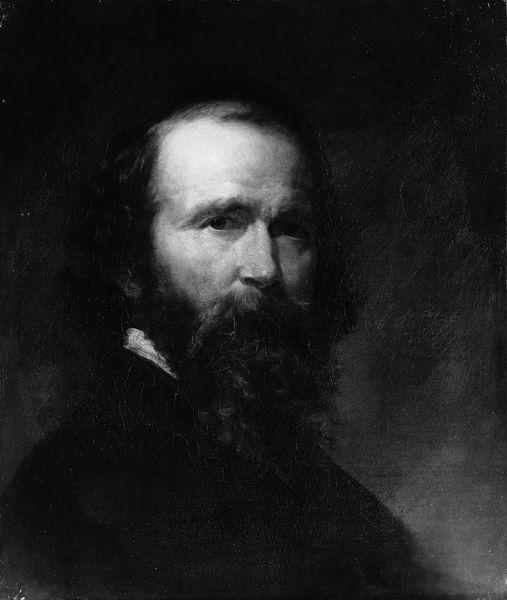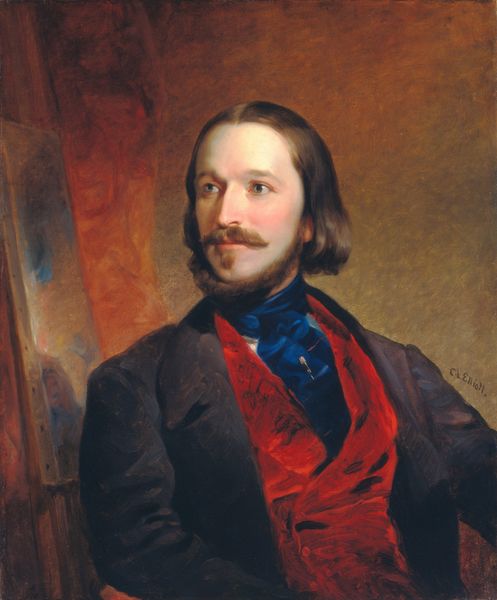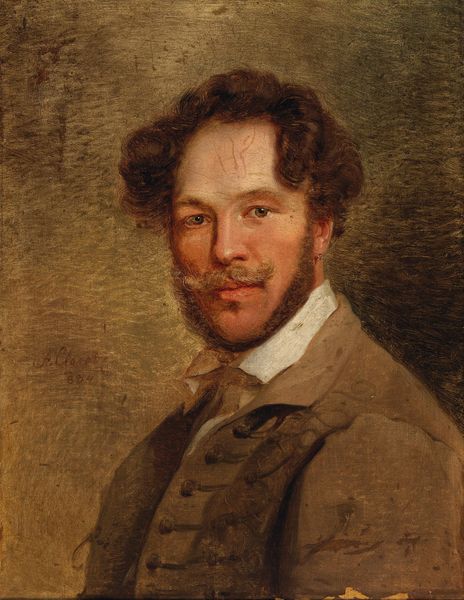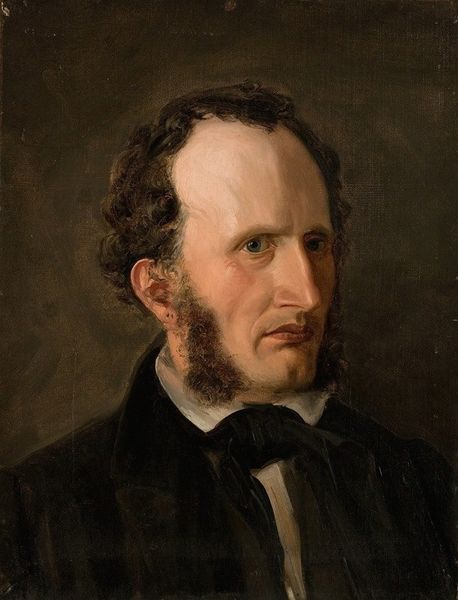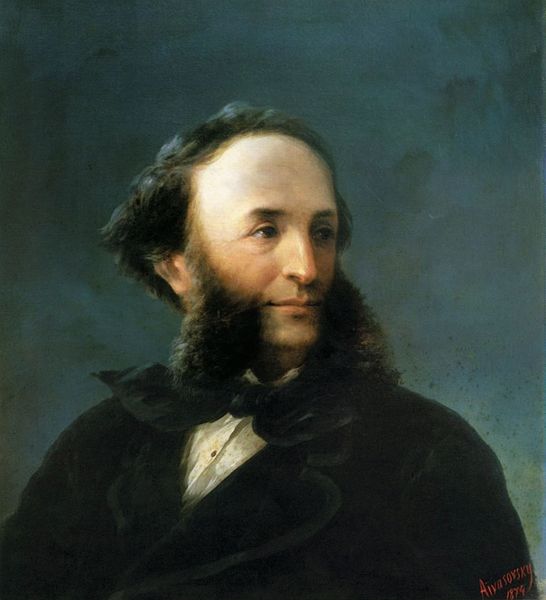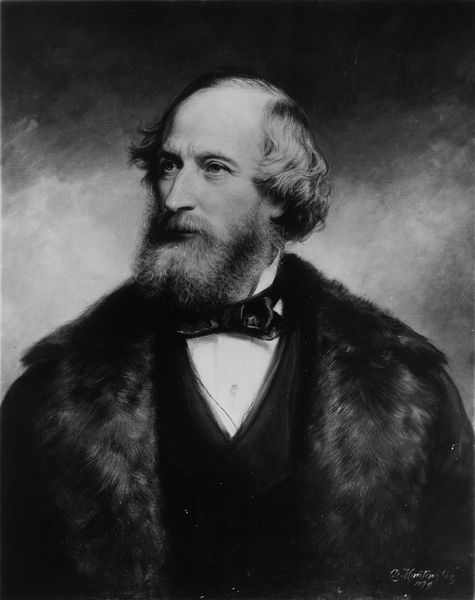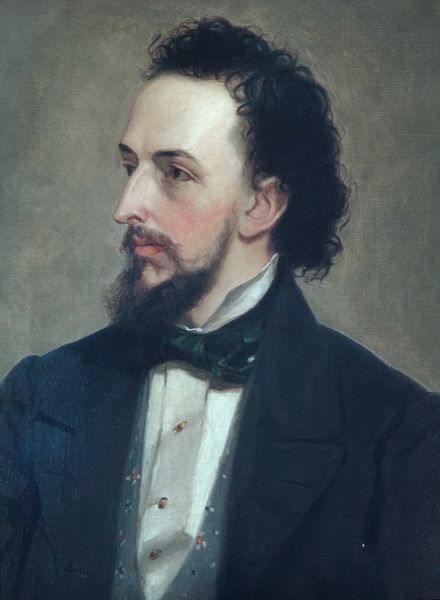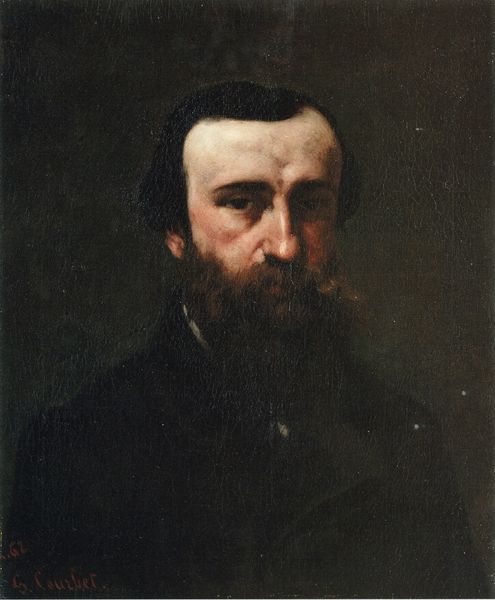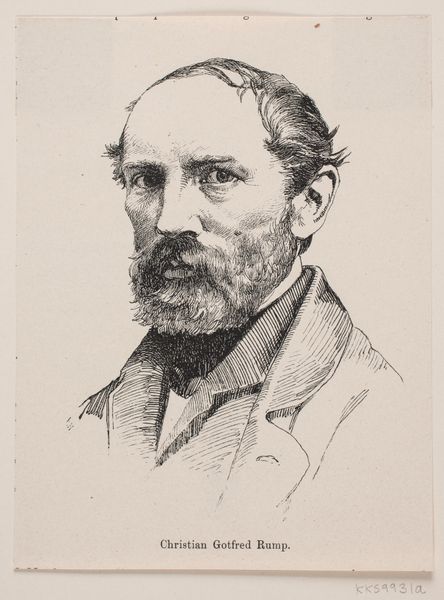
oil-paint
portrait
self-portrait
portrait
oil-paint
romanticism
realism
Dimensions: 30 1/8 x 24 1/2 in. (76.5 x 62.2 cm)
Copyright: Public Domain
Curator: The tenebrism here is just masterful, isn't it? All that stark contrast between the light and shadow…it really sculpts the face. Editor: It does. The overwhelming darkness is striking; almost unsettling. He looks like he's emerging from a void. We’re viewing "Portrait of the Artist" completed by Charles Loring Elliott somewhere between 1847 and 1850. It currently resides at The Metropolitan Museum of Art. Curator: Observe how Elliott uses a restricted palette, primarily blacks and browns, to enhance the emotional impact. Notice the subtle gradations in tone used to define the cheekbones, the bridge of the nose...it's all carefully considered to capture a particular psychological state. Editor: Absolutely. That sliver of red ribbon...it’s impossible to ignore that splash of color. Red often symbolizes passion, sacrifice, maybe even suffering. Perhaps hinting at the struggles and intensity of the artistic life? The serious face, and the deep-set gaze are both pretty powerful as well, aren't they? Curator: Yes, and in a way that bold accent works as an activation point that reinforces the picture's careful formalism. Its strategic placement serves to underscore the overall compositional structure. Editor: It speaks volumes. His upward glance feels a little Romantic to me. There’s that sense of yearning, of searching beyond the immediate. A deep contemplation that Romantic painters capture in many pieces from that era. Curator: While leaning into the conventions of realism and naturalism that dominated portraiture, one could also view this work within a Romantic paradigm given its heightened sensitivity to inner psychological states, captured expertly through the handling of light and shadow. Editor: Ultimately, a very compelling self-representation. What do you take away from your close look at this work? Curator: How expertly a self-portrait from life may act as both an external representation and as a probing self-examination by an artist like Elliott. Editor: Indeed. In scrutinizing visual motifs and the artful interplay between darkness and light, we get a real, lingering sense of humanity from this portrait.
Comments
No comments
Be the first to comment and join the conversation on the ultimate creative platform.
